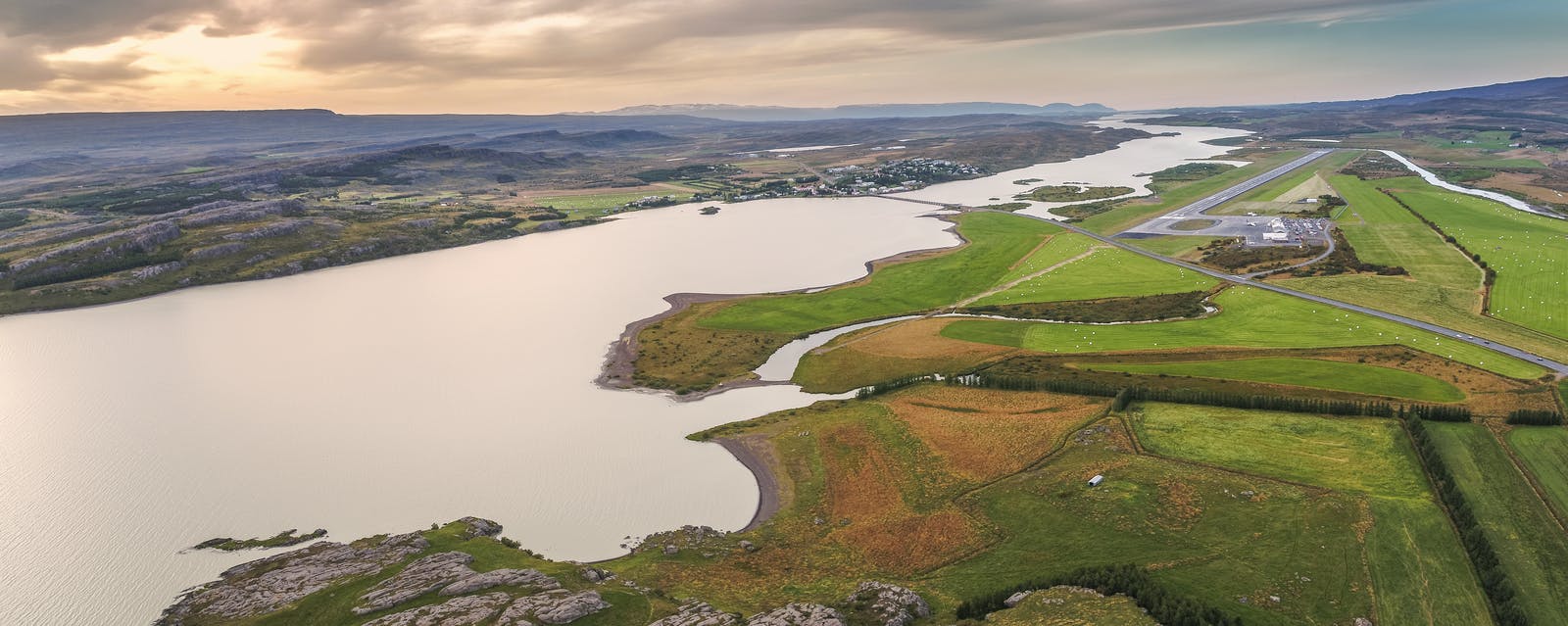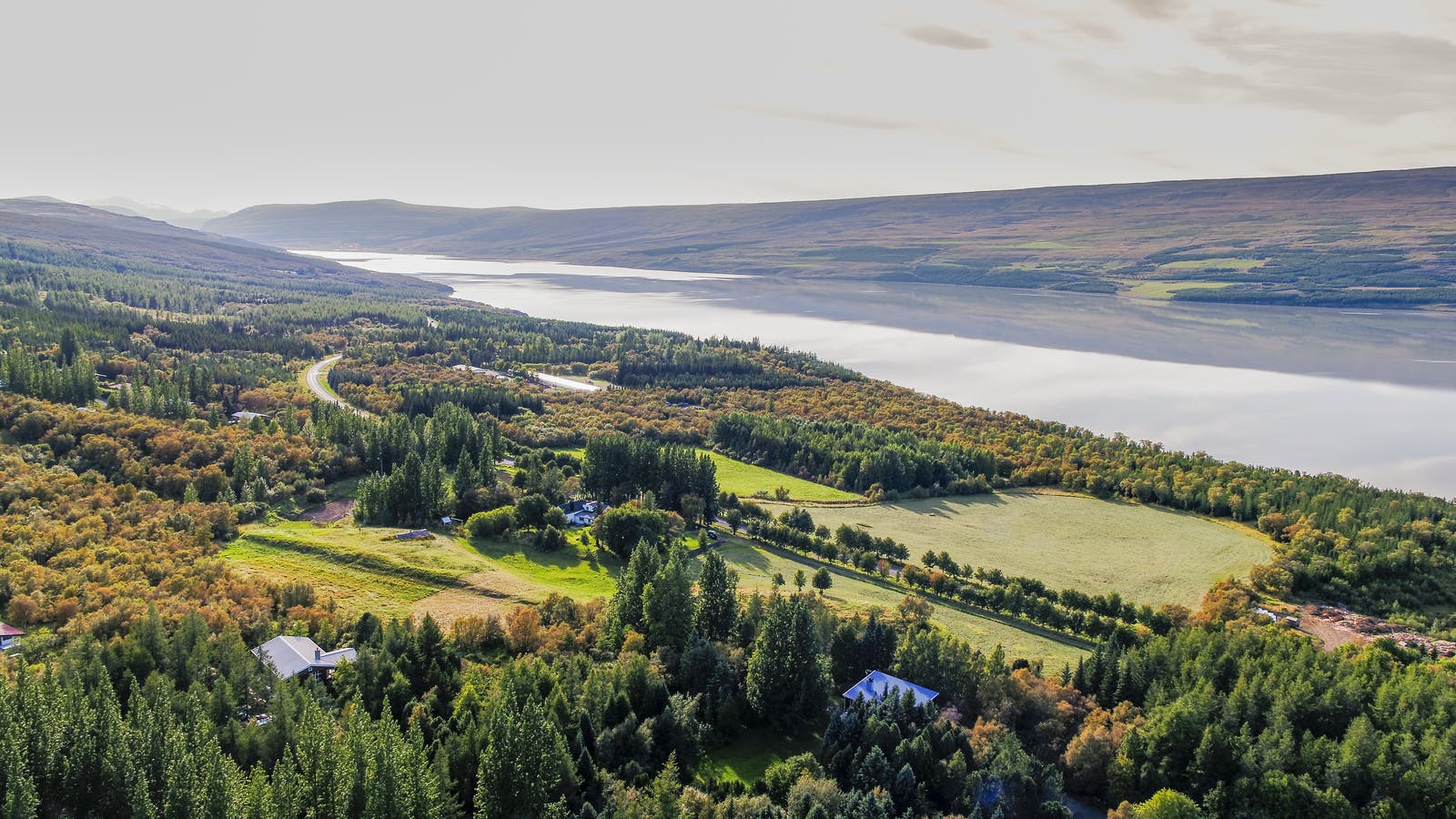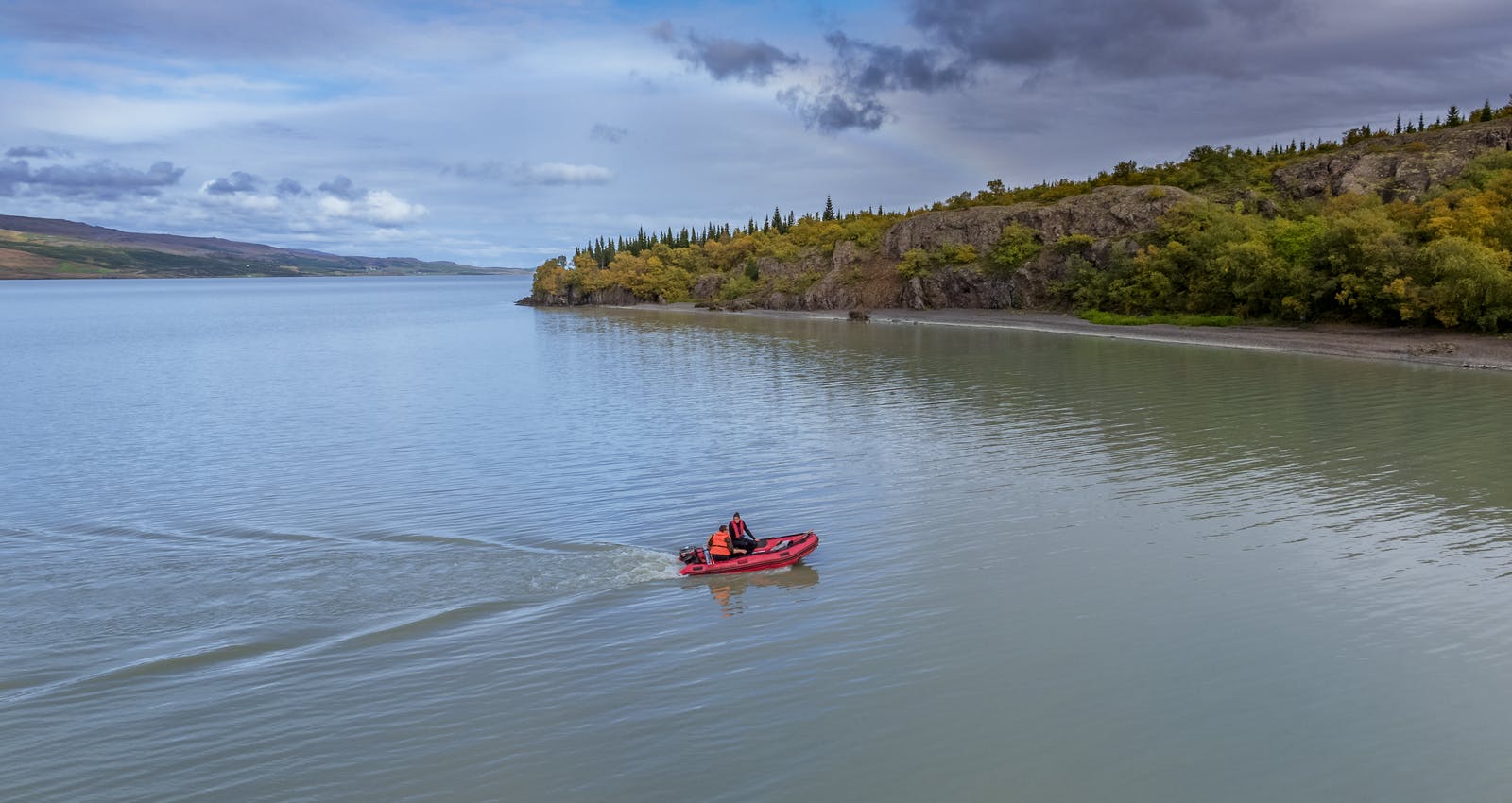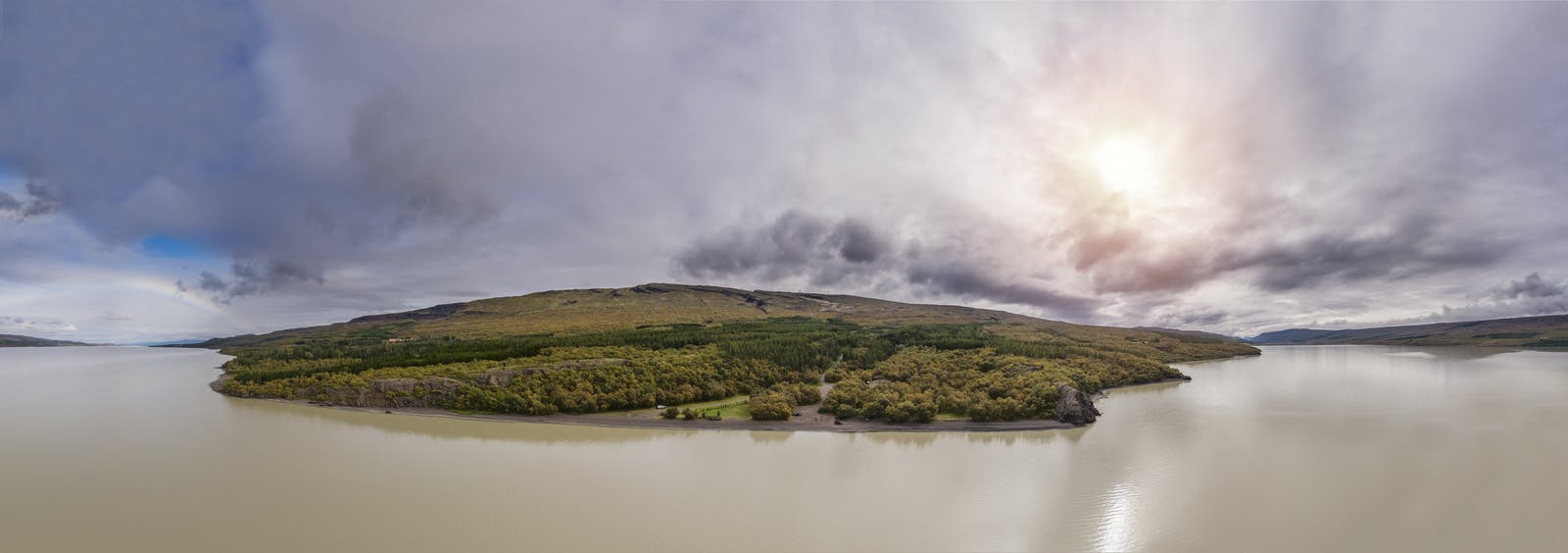
Guide to Lake Lagarfljót
Located in one of Iceland's untamed and mystical landscapes lies a remarkable body of water known as Lagarfljót. Positioned in the eastern part of the country, spanning approximately 25 miles in length, this picturesque lake is surrounded by captivating scenery. Lagarfljót has become an essential part of Iceland's cultural heritage, rich in history, folklore, and geological wonders.
Current Importance of Lake Lagarfljót
Lagarfljót holds significance beyond folklore and recreation. It serves as an important hydroelectric power source for the region, with several dams harnessing the power of its waters. This blend of nature's beauty and human ingenuity further adds to the lake's mystique.
At Perlan in Reykjavík, you can learn more about the importance of water in Icelandic nature. The exhibition focuses, amongst others, on the diversity of freshwater, its importance to society and the role of water in making and shaping the land.
Where is Lagarfljót located?
Lagarfljót is located in the eastern part of Iceland, relatively far from the capital city of Reykjavík. The distance between Reykjavík and Lagarfljót is approximately 350 kilometres (about 217 miles) when taking the most common driving route.
How Was Lake Lagarfljót Formed?

Geologically, Lagarfljót was formed during the Ice Age by the glacial erosion of the surrounding valleys, leaving a vast basin that was later filled with meltwater. Today, the lake is fed by several rivers and glacial streams.
The tranquil surface of Lagarfljót mirrors the towering mountains and dense forests that encircle it, creating a picturesque panorama that has inspired artists, writers, and photographers over the years.
One of the most intriguing aspects of Lagarfljót is the ever-changing watercolour. On some days, it appears dark and foreboding, reflecting the brooding clouds above. On others, it shimmers in shades of turquoise, captivating the hearts of visitors and locals alike. This unique phenomenon is attributed to the presence of glacial silt, which is finely ground rock particles suspended in the water. As the glacial ice melts, it carries these particles into the lake, giving it its mesmerizing hues.
Water is an important part of Icelandic nature. You will find it in all forms and sizes all around the country. Perlan Museum has an exhibition covering the importance of water in Icelandic nature, showcasing ice caves, waterfalls and more exciting things. Read more about the exhibition here.
Lagarfljót in Folklore

Beyond its geological marvels, Lagarfljót is steeped in Icelandic folklore, a rich tapestry of legends and myths passed down through generations. One of the most famous tales involves the existence of a mysterious creature known as Lagarfljótsormurinn, or the Lagarfljót Worm. The legend dates back to the 14th century and tells of a giant serpent-like creature dwelling in the depths of the lake.
According to Icelandic folklore, the origin of the country’s largest water monster, the Lagarfljótsormur, dates back to a young girl living on a farm north of a river. She received a gold ring from her mother, who had heard that gold could grow if placed in a box with a heather snake.
The girl followed this advice, and within days, both the gold and the snake grew so large that the box was on the verge of bursting. Terrified, the girl threw the box into the river, but the creature continued to grow, eventually becoming violent and causing disturbances in the water.
It was considered a great problem, but no one knew how to fix it. Then, two Sami sorcerers were summoned. They were tasked with killing the serpent and retrieving the gold. They dove into the river but soon resurfaced. The Sami said that they were dealing with a great force and that it was impossible to kill the serpent or retrieve the gold. They claimed that another, much worse serpent lay beneath the gold. So the sorcerers then bound the serpent with two bands, one placed behind its shoulders and the other at the base of its tail.
Since then, the Lagarfljótsormur has remained in the river, though it occasionally rises and shows its tentacles. While the creature is no longer considered dangerous, some believe that sightings of the worm are an ominous sign, predicting natural disasters or plagues.
The tale has captured the imagination of many and remains an integral part of Icelandic culture, with locals and visitors continuing to search for signs of the elusive Lagarfljótsormurinn.
FAQ

Does The Lagarfljót Worm Exist?
The existence of the Lagarfljót Worm, also known as Lagarfljótsormurinn, is a subject of Icelandic folklore and legend. According to the tales passed down through generations, the worm is a giant serpent-like creature dwelling in the depths of Lake Lagarfljót.
Can I Fish in Lake Lagarfljót?
Yes, you can fish in Lake Lagarfljót. The lake is known for its variety of fish species, making it a popular destination for anglers. Some of the fish you might encounter in Lake Lagarfljót include Arctic char, brown trout, and Atlantic salmon. You do, however, need to obtain a fishing permit.







